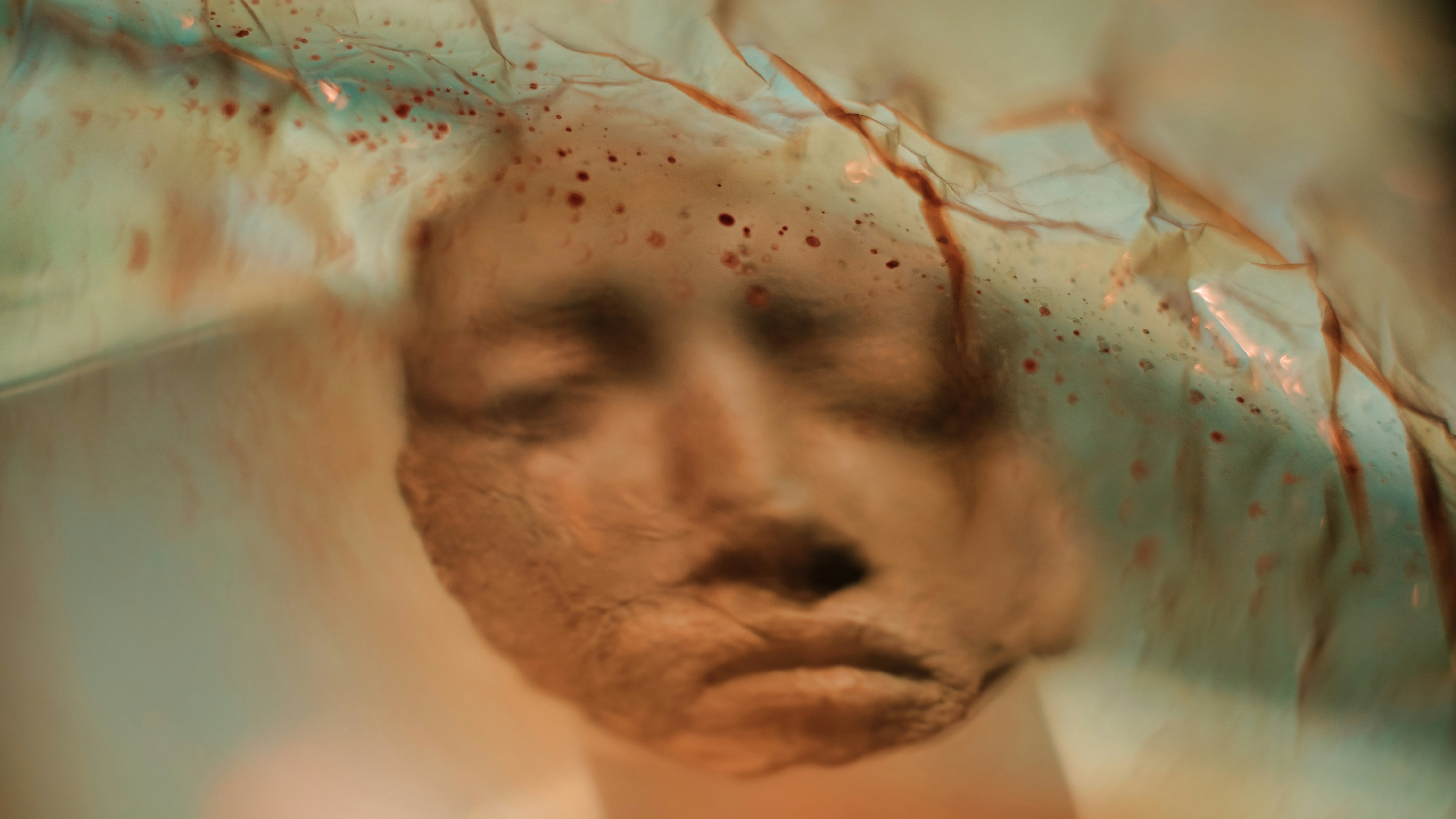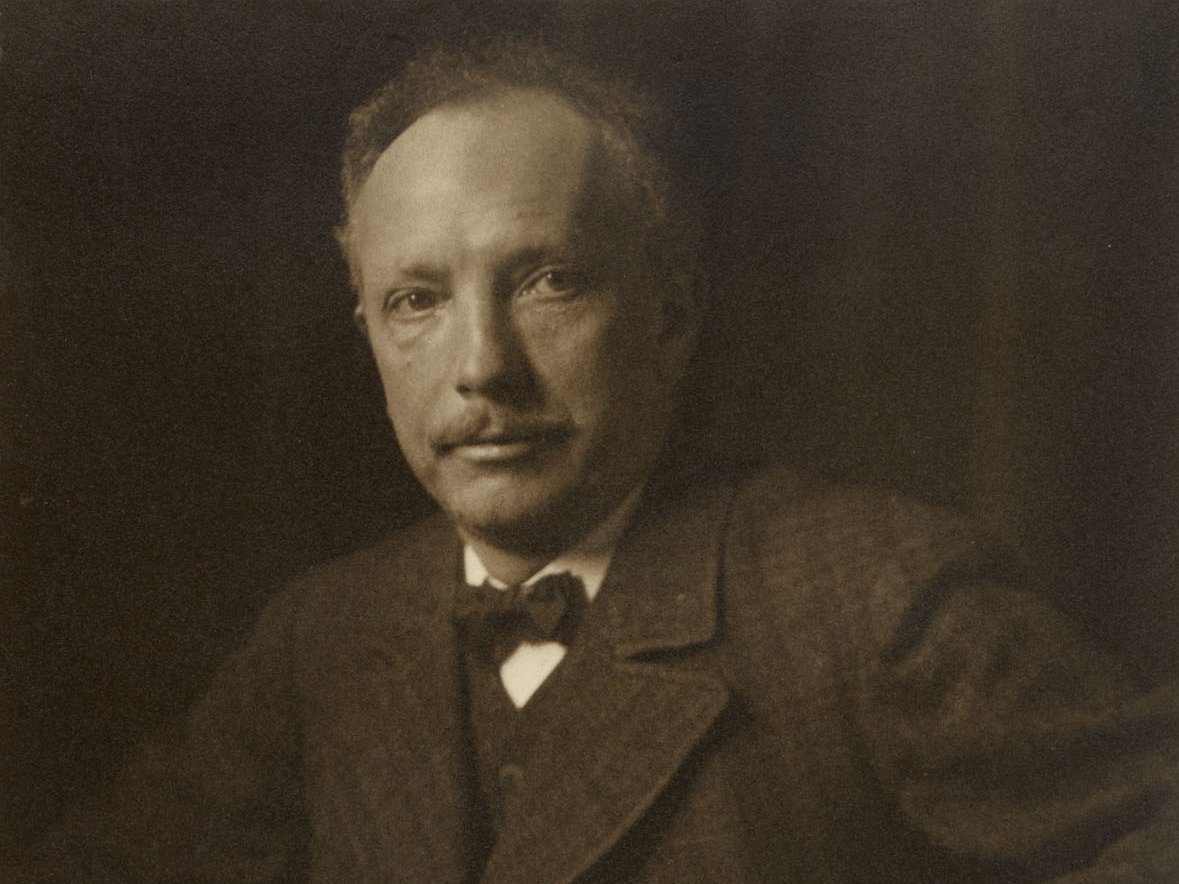- Introduction

It is paradoxical. Although he went on to write many more operas, Elektra will always be considered Richard Strauss’ most modern work. In this astonishing work, he set the most intense and most complex emotions to music - revenge, guilt, madness, painful memories and the struggle for what is just. The score was so intense that the composer reminded himself “to reduce the performers’ actions to the utmost simplicity”. On the distinctive musical language in Elektra.
The orchestra breaks the silence at top volume with piercing vehemence. Its four notes form a motif chiselled from a dark quarry of sound, stridently glinting – before dodging away again to open the scene with the barely-audible grumbling of the maids: the opening of Richard Strauss’ opera Elektra is as shocking as it is unconventional. The powerful motif carries the overwhelming weight of Elektra’s family curse; musicologist Carl Dahlhaus called it the “symbol of history”. Its four ominous notes are a musical signature, representing the name of Agamemnon, murdered father of the title character.
It is for the memory of Agamemnon that Elektra continues to live – and for the memory of his violent death at the hands of his wife Clytemnestra, her own mother. Elektra’s life revolves completely around the question of how this murder can be avenged. With the issue of crime and punishment comes the desire to personally right past wrongs without causing further injustice – moral dilemmas that remain burningly relevant today.
A truly blood-curdling family saga
The revenge of the siblings Elektra and Orestes on Clytemnestra and her lover Aegistheus is the last chapter of the truly blood-curdling family saga of the descendents of Tantalus. Their story was recounted again and again by ancient dramatists, and has continued to be told by authors of more recent times. At the beginning of the 20th century, the art world was fired with a new enthusiasm for antiquity. Hofmannsthal also had a predilection for developing new works from ancient subject matter and stories, as he had done previously with Alkestis and would do later with Jedermann.
He had begun adapting Sophocles’ drama Elektra as a play, but it quickly evolved from an adaptation to a new creation, focussing even more on the title character than the original text. He shifted Orestes, who carried out the act of killing and thus the revenge, into the background, and Aegistheus became a peripheral figure.
The premiere in 1903 was Hofmannsthal’s first major theatrical success – and it gave him a promising idea. When he had met Strauss in 1899 at a salon of the poet Richard Dehmel in Berlin, he had tried unsuccessfully to interest him in a collaborative project. Now he saw another opportunity: the chance to achieve a greater impact and to gain a larger audience for his drama through an operatic version, and to establish a new partnership in which a true poet wrote opera librettos for a composer, the two artists working together as symbiotically as Wolfgang Amadeus Mozart and Lorenzo Da Ponte had in the past.
Finished in barely nine months
Since Strauss regarded himself as a “Greek German”, he was receptive to the Elektra suggestion. He was concerned, however, that the material was too similar to that of Salome, his previous opera. Until then, he had been famous primarily for his symphonic works; after Salome, he became an international star of the stage as well. Nevertheless, he took up Hofmannsthal’s suggestion, arranged the text of the play as an opera libretto (in which the playwright largely gave him free rein), and needed barely nine months to complete the opera.
Hofmannsthal’s tragedy was ideal operatic material. His theatre is characterised by gesture: silent acting that borders on pantomime, with the spotlight on the physical and facial expression of the actors. These gestures formed empty spaces in the text, spaces which Strauss could fill with his music – after all, in eight tone poems, he had amply demonstrated his ability to depict situations and scenes with music alone.
Many of the detailed stage directions become almost tautologous, because Strauss conveys them with music, particularly the first and last scenes, in which Elektra appears without speaking. For example, at the beginning, the stage directions stipulate: “Elektra darts back like an animal to its lair,” and we hear a tense, recoiling leap. And when the third maid says, “She spat at us like a cat,” the hissing is also heard in the orchestra.
In “Elektra”, only the orchestra should rage
Conversely, Strauss strived for the greatest possible reduction in physical action during performances. “In general,” he wrote, “in contrast to the highly agitated music, the performers’ actions must be reduced to the utmost simplicity … . Rage on the stage and in the pit at the same time – that would too much! The orchestra alone is enough for that!” The music describes the action more clearly than any gestures. Whilst the play ends with uneasy ambivalence (a sign of Orestes’ success that could also signal Elektra’s delusions), the music clearly ends in a climactic triumph; the Agamemnon motif brightens from minor to major in the final bars.
The expressive impact is due in large part to the advanced musical language that Strauss developed in this work; Elektra is rightly considered his most modern score. He pushes the harmonic boundaries of major-minor tonality to extremes, and dares to use harsh dissonances in order to convey extreme psychological situations – such as the bitonal “Elektra chord”. Strauss was never to write as radical a stage work again, almost as if, having glimpsed the abyss, he was terrified of what he saw there. On the other hand, Elektra also turns to more traditional harmony as a principle of order – like the melodic dream of life of Chrysothemis, who wants to forget the past.
“When Elektra mourns a past that has been destroyed (‘I think I was once beautiful …’), Strauss does not compose the destruction, but rather the splendour of the memory,” Carl Dahlhaus writes, “and when she talks about a loss (‘All that I had and all I was, I had to sacrifice …’), it is the beauty of what was lost that is evoked by the music.” Like no other composer, Strauss shows us how music – the most fleeting of all the arts – can tell us about remembering and forgetting.

Richard Strauss – a hero?
In »Ein Heldenleben« – A Hero’s Life – Strauss portrayed no one but himself. What was so heroic about him, however, the composer did not reveal.

Richard Strauss’s “Metamorphosen”: An introduction
The title derives from the ancient Greek and implies music that transmutes and transmogrifies incessantly.

Richard Strauss and the Berliner Philharmoniker
On the first visit, the orchestra did not leave a good impression with Richard Strauss – they were to change that completely.